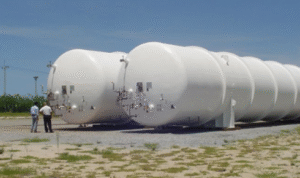The air bleeder valve is a critical part of your heating, ventilation, and air conditioning (HVAC) system, ensuring proper air circulation and preventing airlocks. Let’s delve into where you can find the air bleeder valve in your HVAC setup for efficient operation.
1. Understanding the Air Bleeder Valve
The air bleeder valve serves the essential function of releasing trapped air from the HVAC system, allowing for optimal heating or cooling performance throughout your home or building.
2. Essential Component of HVAC Systems
In HVAC systems, air bleeder valves are strategically placed to eliminate air pockets that may hinder the circulation of hot or cold air, ensuring even distribution and temperature control.
3. Preventing Airlocks
Airlocks occur when air becomes trapped within the HVAC system, obstructing the flow of water or air. The air bleeder valve helps prevent airlocks by releasing trapped air, maintaining system efficiency.
4. Checking the Boiler System
In hydronic heating systems, such as boilers, the air bleeder valve is typically located near the highest point of the system, often on or near the boiler itself.
5. Exploring Radiators and Baseboard Heaters
For homes or buildings with radiators or baseboard heaters, the air bleeder valve is commonly found at the top of each unit, allowing trapped air to escape and ensuring consistent heating performance.
6. Locating the Expansion Tank
In forced hot water heating systems, the air bleeder valve may be situated on the expansion tank, which absorbs excess pressure and volume changes within the system.
7. Checking Near the Circulator Pump
In some HVAC setups, especially those with circulating pumps, the air bleeder valve may be located near the circulator pump to facilitate the release of trapped air within the system.
8. Inspecting Ductwork and Air Handlers
For central air conditioning systems, the air bleeder valve may be incorporated into the ductwork or near the air handler unit, allowing for the removal of air bubbles that can impede cooling efficiency.
9. Near the Highest Point of the System
Regardless of the HVAC configuration, the air bleeder valve is typically positioned at or near the highest point of the system, where air naturally accumulates and needs to be purged.
10. Consulting HVAC System Manuals
To pinpoint the exact location of the air bleeder valve in your HVAC system, refer to the manufacturer’s manuals or documentation provided with your heating or cooling equipment.
11. Checking Near Pressure Relief Valves
In systems with pressure relief valves, the air bleeder valve may be located in close proximity, as both components play complementary roles in maintaining system pressure and efficiency.
12. Inspecting for Bleeder Valve Handles
The air bleeder valve is often equipped with a small handle or knob that can be manually operated to release trapped air from the system, facilitating routine maintenance and troubleshooting.
13. Using a Flashlight for Inspection
When searching for the air bleeder valve, especially in dimly lit areas such as boiler rooms or utility closets, use a flashlight to illuminate the surroundings and locate the valve more easily.
14. Considering Accessibility
Ensure that the air bleeder valve is easily accessible for routine maintenance tasks, such as bleeding air from the system or checking for leaks, to facilitate efficient operation and troubleshooting.
15. Inspecting for Leaks
While locating the air bleeder valve, inspect the surrounding area for signs of leaks or corrosion, as these may indicate underlying issues that require attention from a qualified HVAC technician.
16. Using Caution When Operating Valves
Exercise caution when operating the air bleeder valve or any other valves in the HVAC system, as excessive force or improper handling may cause damage or lead to leaks within the system.
17. Seeking Professional Assistance
If you’re unable to locate the air bleeder valve or encounter difficulties during maintenance or troubleshooting, seek assistance from a licensed HVAC technician with expertise in your specific HVAC setup.
18. Understanding System Pressure
The air bleeder valve helps regulate system pressure by releasing excess air, preventing pressure buildup that can damage components or compromise system efficiency.
19. Ensuring Proper Ventilation
Proper ventilation is essential for maintaining indoor air quality and comfort levels, and the air bleeder valve plays a crucial role in ensuring efficient air circulation and distribution throughout your home or building.
20. Checking for Air Bleeding
Periodically check the air bleeder valve to ensure that it is functioning properly and effectively releasing trapped air from the HVAC system, especially after system maintenance or repairs.
21. Incorporating Bleeding into Maintenance
Incorporate bleeding the air bleeder valve into your regular HVAC maintenance routine to prevent airlocks and optimize system performance, particularly before the start of each heating or cooling season.
22. Investing in Preventive Maintenance
Investing in preventive maintenance for your HVAC system, including bleeding the air bleeder valve and inspecting for leaks, can help prolong the lifespan of your equipment and minimize the risk of costly repairs.
23. Understanding System Dynamics
Understanding the dynamics of your HVAC system, including the role of the air bleeder valve, empowers you to troubleshoot issues effectively and communicate with HVAC professionals during service calls.
24. Maintaining Optimal Performance
By locating and maintaining the air bleeder valve in your HVAC system, you can ensure optimal performance, energy efficiency, and comfort levels throughout your home or building, regardless of the season.
25. Prioritizing HVAC System Health
Prioritize the health and efficiency of your HVAC system by familiarizing yourself with its components, including the air bleeder valve, and implementing regular maintenance practices to keep your system running smoothly for years to come.





